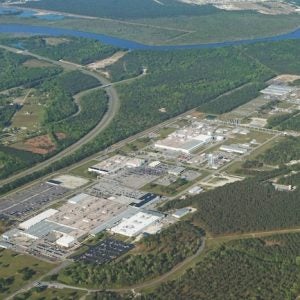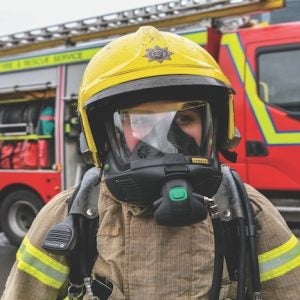
The dangers faced by those working in a nuclear facility are unlike those in any other profession. That means the skills and knowledge needed to respond to injuries in the workplace are specialised, and it is critical that all staff are adequately prepared to respond to emergencies.
In most jurisdictions, regulatory authorities are responsible for workplace health and safety such as Occupational Safety and Health Administration (OSHA) in the USA. However, for the nuclear sector the additional safeguarding measures required often bring further regulatory scrutiny from bodies like the Office for Nuclear Regulation (ONR) which is the regulating body that oversees nuclear safety in the UK. This entity aims to minimise safety risks in nuclear facilities, and it assesses and provides guidance to the country’s nuclear sites. The ONR works closely with the International Atomic Energy Agency (IAEA), which has published accepted safety guidelines for nuclear facilities. Nuclear power plant industrial safety practices, accidents and near miss events are routinely reviewed as part of IAEA’s Operational Safety Review Team (OSART) missions which feed back to the safety guidelines. The overarching philosophy, as noted by the IAEA, is operating experience and research have shown that good industrial safety practices at nuclear facilities during all phases of their life cycle is correlated with superior performance. This performance is shown through an excellent nuclear safety culture and better cost and schedule performance.
Still, accidents happen in the workplace, and it’s important that all staff are ready to respond appropriately when they do. First aid training is the most practical way employees can prepare for injuries at work. In nuclear facilities, as with other industrial sectors, the potential workplace injuries for employees can be a matter of life and death. Advanced first aid training for staff can help ensure that any injuries are stabilised immediately while waiting for emergency services to arrive on site. Staff should therefore not only have a clear grasp of why first aid knowledge is so crucial, but also the specific dangers and risks that may result in workplace injuries, and the most important aspects of first aid training for any specific role.
As the IAEA notes, workers at nuclear facilities such as nuclear power plants, fuel fabrication facilities or waste processing and storage sites can be subject to a number of industrial health and safety risks. Such facilities can contain hazardous processes and materials such as hot steam, harsh chemicals, electricity, pressurised fluids and mechanical hazards. Workers can be exposed to these and other hazards during normal duties (including slips, trips and falls, driving accidents and drowning). Another particular concern for the nuclear sector is public perception of the industry. Industrial safety accidents, along with their direct impacts on the individuals involved, can also negatively affect the image of nuclear facilities and their general acceptance by the public.
Understanding the importance of first aid in nuclear environments
First aid training is important for any workplace, but in environments like nuclear facilities where the dangers are potentially extreme, first aid is about more than plasters and antibiotic cream. In this kind of workplace, first aid training also includes how to respond to nuclear accidents, explosions, radiation exposure, and other industry-specific hazards.
Without proper knowledge of first aid as it relates to the hazard risks of nuclear facilities, the chance of an injury causing long-term damage or even a fatality is higher and swift action is necessary to prevent the situation from escalating.
Given the specific risks involved with working in a nuclear facility understanding how to address these injuries when they happen is critical. Key considerations for staff training include:
Slips and falls
Often, workers in nuclear facilities have to utilise ladders or scaffolding, working at height and creating a fall risk. Lifting operations can also present the risk of injury. This opens up the possibility of fractures, head and spine injuries, and more. Staff should be aware of the techniques necessary to safely stabilise a patient under such circumstances.
Radiation exposure
One of the most serious dangers of nuclear facilities is the risk of radiation exposure. Exposure to radiation in a nuclear accident can cause burns, gastrointestinal problems, nerve damage, heart and vascular system damage and increased risk of developing cancer. Immediately eliminating further exposure is the primary requirement but additional training can be required to address burns or other acute symptoms prior to emergency services arrival.
Electrocution
While nuclear energy is generally considered safe, like any power generation environment the risk of electrocution is still present, particularly in areas such as the switchyard. Electrocution can have serious consequences, including cardiovascular problems, burns and nerve damage. knowing how to treat a worker who has experienced it is critical.
Burns
Due to the risk of high-pressure steam, corrosive chemicals, fires and explosions at nuclear facilities, burns are a potential hazard for employees. Depending on the severity of the burn, immediate first aid can prevent infection and scarring.
Crush injuries
Employees working around heavy machinery are at risk of experiencing crush injuries. If this happens, the injured person needs to be treated right away because of the risk of internal injuries. Maintaining proper first aid until first responders arrive is critical.
Key components of advanced first aid training for nuclear personnel
First aid training should be prioritised for everyone working in a nuclear facility no matter what their role may be.
Understanding how to respond to various emergencies and preparing ahead of time will reduce the risk of complications and could very well save lives. There are some components of first aid training that should always be included in workplace safety initiatives for nuclear facilities.
Given the significance of radiation exposure risks and the complications implied, a solid understanding of how to handle these emergencies should be a priority. In the unlikely event of a nuclear accident, experts will attempt to promptly come on-site to help navigate the situation. But all staff should still ensure there is an understanding of the basic principles of how to respond to acute radiological incidents. Those include reducing or eliminating further radiation exposure by withdrawing from the contaminated location and where possible placing dense physical barriers between personnel and the source, washing with soap and water as soon as possible to decontaminate clothing and skin, administer iodine tablets where appropriate, and seek immediate emergency medical care.
In addition, since some workplace risks can be life- threatening, cardiopulmonary resuscitation (CPR) and Automated External Defibrillator (AED) training is of the utmost importance so that life-saving measures can be performed as soon as possible if needed. CPR involves administering chest compressions and rescue breaths to a person who has stopped breathing and is without a pulse.
An AED is used to shock a patient with an abnormal heart rhythm in an attempt to return it to normal. Every facility should have an easily accessible and regularly AED ready for in case of emergency, and it’s a good idea for employees to have a general idea of how to use it should the need arise.
Maintaining a comprehensive workplace first aid kit
In order to treat the other many potential injuries employees face at work within a nuclear installation, it is also imperative that all staff have ready access to a well-stocked first aid kit. This kit needs to be maintained regularly to ensure that nothing within it has expired and everyone should know where it is and how to use its contents. Some of the most highly recommended items to keep in a workplace first aid kit include:
- A contents list and instructions for how to use each item
- Gloves
- Gauze
- Wound cleaning towelettes
- Adhesive bandages
- Tweezers
- Alcohol wipes
- Scissors
- Tourniquet
- Thermal blanket
Nuclear facility workers are subject to unique risks, but with proper safety precautions and first aid training, injuries can be avoided or quickly treated to prevent further complications and minimise the long-term impact. It’s critical for facility management to ensure that all team members are up-to-date on the advanced first aid training required to maintain a safe workplace. First aid training saves lives, and emergency preparedness is the best way to keep your facility safe.
Author: Steven John Cumper, B.App.Sc., founder and Managing Director, Medshop Group






